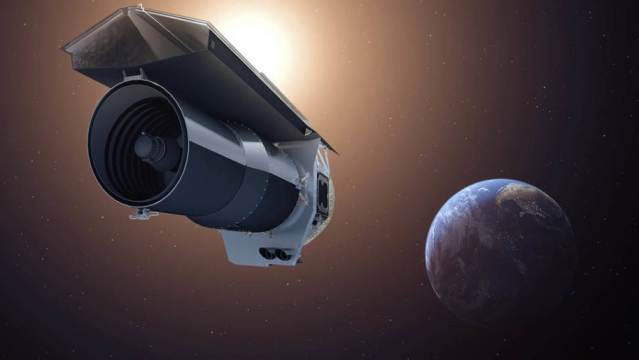Deep space is a harsh, unforgiving place, traversed only by the lonely few. Now, one traveller’s decade-spanning journey through the stars is coming to an end. January 31 marks the last day NASA’s Spitzer Space Telescope will broadcast science and engineering data to Earth, closing the final curtain on a trip that first began in 2003.
Spitzer’s final transmission was announced in a blog post by NASA, drawing a prolific and achievement-filled career closed for the Spitzer. In the same announcement, NASA confirmed that it would be replaced by the James Webb Space Telescope, a newer infrared telescope.
Happening now: The safe mode command has been sent to Spitzer.
It takes about 15 minutes for the command to reach the telescope. #SpitzerFinalVoyage
— NASA Spitzer (@NASAspitzer) January 30, 2020
The Spitzer was launched in 2003 as part of a group of telescopes that became known as the Great Observatories, developed to observe deep space in differing wavelengths. The Spitzer focused on observation of infrared light, which has longer wavelengths than visible light and is therefore harder to observe, according to NASA.
Despite this challenge, Spitzer had a fruitful career that included its monumental discovery of the large ‘Phoebe’ ring around Saturn in 2009 — a ring made of minute dust particles and theorised to have been formed by detritus from cosmic collisions.
Spritzer also aided in the discovery of the TRAPPIST-1 red dwarf and its four surrounding exoplanets, as well as aiding in the discovery that stars weighed more than previously theorised.
“Spitzer taught us how important infrared light is to understanding our universe, both in our own cosmic neighbourhood and as far away as the most distant galaxies,” said NASA Director of Astrophysics Paul Hertz in a press release announcing the Spritzer’s final transmission.
Originally planned to embark on a 2.5 year journey across the stars with the aim to capture the ‘invisible’ world of space that couldn’t be seen by traditional telescope equipment. The Spitzer was set on a trail away from Earth’s orbit, where it could better observe the cool depths of space.
Defying all expectations, the Spitzer lasted more than a decade longer than what was originally planned, racking up over 17 years in active service before the decommissioning order was sent down. Running the Spitzer telescope was estimated to cost around $US$14 million ($20.8 million) annually to run by NASA, with a call for potential investors going out in 2017, near the end of the Spitzer’s lifespan.
While Spitzer’s long journey is now at an end, it’s left one impressive legacy. With a massive archive of cosmic photography now freely available thanks to Spitzer’s work, there are still plenty of discoveries left to be made in the telescope’s name. As Caltech Associate Research Scientist Luisa Rebull told The Verge, “We’re going to be learning things out of the Spitzer archive for decades to come.”
The Spitzer is dead. Long live the Spitzer.
